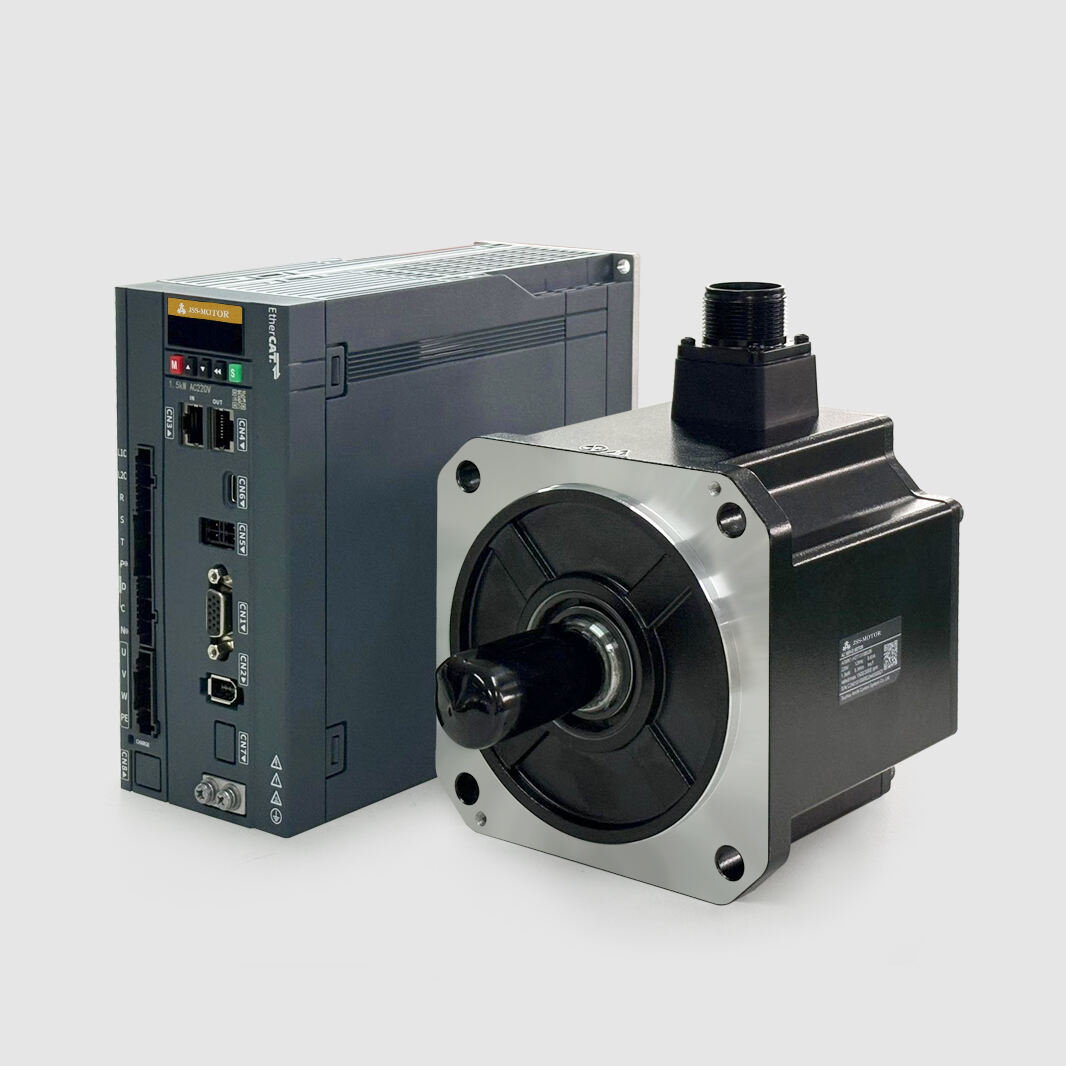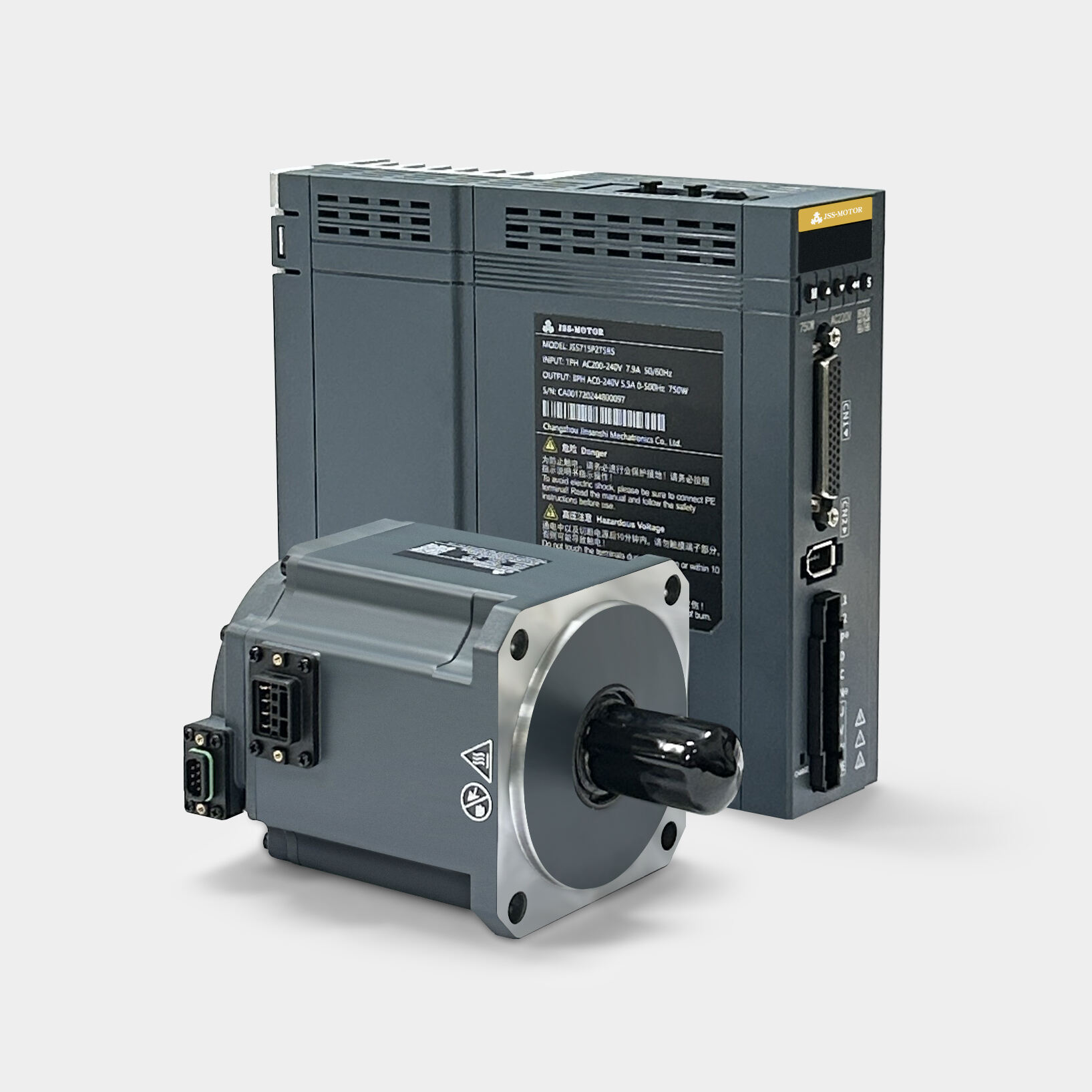Understanding Motion Control System Fundamentals
In the world of precision motion control and automation, choosing the right motor technology can make or break your application's success. The debate between ac servo motors and stepper motors continues to be a critical decision point for engineers and system designers. Both technologies offer unique advantages and specific use cases, but understanding their fundamental differences is essential for making an informed choice.
Motion control systems form the backbone of modern industrial automation, from CNC machines to packaging equipment. At the heart of these systems lies the motor - the component responsible for converting electrical energy into mechanical motion. The ac servo motor represents the pinnacle of precision motion control, offering exceptional accuracy and dynamic performance, while stepper motors provide a simpler, often more cost-effective solution for less demanding applications.
Core Components and Operating Principles
AC Servo Motor Technology
The ac servo motor system consists of several sophisticated components working in harmony. At its core, you'll find a permanent magnet synchronous motor, equipped with high-quality bearings and precision-wound electromagnetic coils. The motor interfaces with an advanced controller that processes feedback from the integrated encoder, creating a closed-loop system that constantly monitors and adjusts position, velocity, and torque.
What sets the ac servo motor apart is its ability to maintain precise control over motor shaft position and velocity. The encoder provides real-time feedback about the motor's actual position, allowing the controller to make instantaneous corrections. This closed-loop operation ensures exceptional accuracy and repeatability, even under varying load conditions.
Stepper Motor Architecture
In contrast, stepper motors operate on a simpler principle. They divide a full rotation into a fixed number of steps, typically 200 steps for a 1.8-degree step angle. The motor moves through these discrete steps as electrical pulses energize the motor's windings in sequence. This design creates an open-loop system that doesn't require feedback for basic operation.
The internal construction of a stepper motor features a toothed rotor and stator, with electromagnetic coils that create magnetic poles when energized. This arrangement allows for precise positioning without feedback, but it comes with certain limitations in terms of speed and efficiency.
Performance Characteristics and Capabilities
Speed and Torque Dynamics
When it comes to performance, the ac servo motor demonstrates superior characteristics in high-speed applications. These motors can maintain full torque at high speeds and accelerate rapidly, making them ideal for dynamic applications requiring quick position changes. The relationship between speed and torque remains relatively constant throughout the operating range, ensuring consistent performance.
The advanced control algorithms in servo systems allow for precise torque control, enabling smooth operation even during rapid acceleration and deceleration. This capability makes ac servo motors particularly valuable in applications requiring complex motion profiles or precise force control.
Precision and Accuracy Metrics
In terms of positioning accuracy, ac servo motors excel due to their closed-loop control system. They can achieve positioning accuracies down to sub-micron levels when paired with high-resolution encoders. The continuous feedback allows the system to compensate for external disturbances and maintain position even under varying loads.
Stepper motors, while capable of good positioning accuracy in ideal conditions, may lose steps under load or at high speeds. This limitation can lead to positioning errors in open-loop configurations, though modern stepper systems often incorporate feedback mechanisms to mitigate this issue.

Application Considerations and Selection Criteria
Industrial Applications
The ac servo motor finds its sweet spot in demanding industrial applications requiring precise motion control. These include robotics, CNC machinery, packaging equipment, and semiconductor manufacturing. The ability to handle variable loads while maintaining accuracy makes servo systems indispensable in these environments.
Industries requiring high-throughput automation particularly benefit from servo technology. The superior speed and acceleration capabilities allow for faster cycle times and improved productivity. Additionally, the precise torque control enables delicate handling of products while maintaining robust operation.
Cost-Benefit Analysis
While ac servo motors typically represent a higher initial investment, their long-term benefits often justify the cost. The increased efficiency, reduced maintenance requirements, and superior performance can lead to lower total cost of ownership in demanding applications. The energy savings alone, due to better efficiency, can contribute significantly to cost recovery.
Stepper motors remain cost-effective for simpler applications where their limitations don't impact system performance. The lower initial cost and simpler control requirements make them attractive for basic positioning tasks or low-duty-cycle operations.
System Integration and Control Requirements
Drive Electronics and Control Systems
Implementing an ac servo motor system requires sophisticated drive electronics and control systems. The servo drive must process encoder feedback and implement complex control algorithms to maintain precise motion control. Modern servo drives offer advanced features like auto-tuning, vibration suppression, and network connectivity.
The control system must be capable of handling high-speed communication and processing to fully utilize the servo motor's capabilities. This includes real-time position and velocity control, along with advanced motion planning and synchronization features for multi-axis applications.
Installation and Maintenance Considerations
Professional installation is crucial for optimal ac servo motor performance. This includes proper mounting, alignment, and cable routing to minimize electromagnetic interference. The system requires initial tuning and parameter optimization to achieve the best performance for specific applications.
Regular maintenance involves monitoring encoder performance, checking bearing condition, and ensuring proper cooling system operation. While servo systems are generally reliable, preventive maintenance helps maintain peak performance and extend service life.
Frequently Asked Questions
How does the efficiency of an ac servo motor compare to a stepper motor?
AC servo motors typically offer higher efficiency, often exceeding 90% at rated operation, compared to stepper motors which usually operate at 50-70% efficiency. This difference becomes particularly significant in continuous operation or high-duty-cycle applications, where energy savings can be substantial.
What are the key maintenance requirements for ac servo motors?
Regular maintenance for ac servo motors includes checking encoder signals, monitoring bearing condition, ensuring proper cooling, and verifying cable connections. The system should be periodically re-tuned to maintain optimal performance, especially if the application requirements change.
Can ac servo motors be used in hazardous environments?
Yes, specially designed ac servo motors are available for hazardous environments. These motors feature sealed enclosures, special bearing protection, and appropriate certifications for explosive atmospheres or harsh conditions. However, proper specification and installation are crucial for safe operation in these environments.

